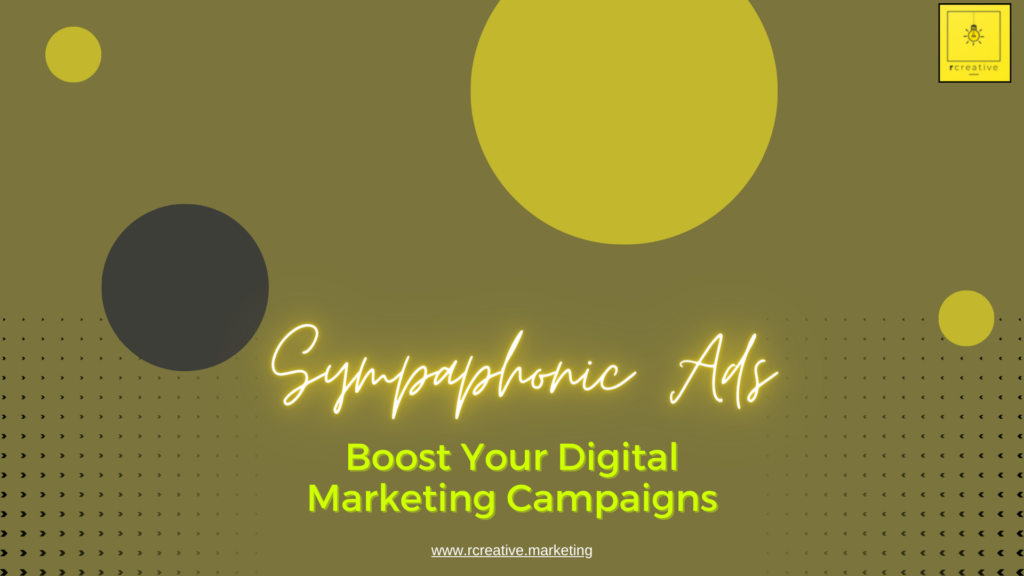How to Use Business Reviews to Boost Your Organic Search Results
Your business is awesome. You know it, we know it, but do your potential customers know how great you are? Having a wealth of happy customers may be the best word of mouth strategy but it does little to boost your organic search results online. When you transfer this word of mouth power to the Web great things happen! This is why many businesses are including online business reviews as part of their overall search engine optimization (SEO) strategy. You can use business reviews to boost your organic search results and drive additional traffic to your website. Online business reviews may be just the confidence boost your potential customers need before clicking on your link. [text_with_frame id="368c1dbfefba91dceb946d322e0e86bc" content="‹¨›p‹˜›‹¨›em‹˜›If you find this article helpful consider giving it a share‹¯›nbsp;‹¨›/em‹˜›?‹¨›/p‹˜›" line_color="rgba(0,0,0,.07)" text_font="body" heading_font="heading" animation="none" animation_speed="2" animation_delay="0" __fw_editor_shortcodes_id="e6852c2dacc162bc8c34ba646905e841" _fw_coder="aggressive"][/text_with_frame] Searchers Rely on Business Reviews Many of your ideal customers do not know who you are yet. They need to be introduced to you and your great product or service. Unfortunately, too many people think of online marketing as tricking the-great-Google-list-making-robot into including you near the top of its list. To the contrary, successful online marketing is about building relationships - not lists. Someone needs to introduce your ideal customer to you - their ideal solution. That someone is often Google. Yet Google listing you doesn't carry much emotional weight. Searchers tend to trust you more if you are on page one but there is still little emotional connection. Relational marketing happens often on social media. Yet it can happen on Google, Yelp, and industry specific websites as well! Business reviews are one of the most effective means of having your business introduced to…
The Mobile Trend
Online browsing habits have changed greatly over the last decade. No longer are users relying on their PCs for opening your emails, searching for your services, or purchasing your products. The majority of hours spent, search queries made, and emails opened are now from mobile devices. The smartphone trend has changed and will continue to change the Web. A slew of new smartphones are expected in 2018 including new iPhones (likely a total of three new handsets), new Google Pixels, and the LG G7. Innovation in mobile has slowed but not stopped with manufacturers now releasing handsets with always listening voice assistants, multiple cameras to detect depth, facial recognition, and processors faster than most office PCs. Thankfully your website can look beautiful on these mobile devices. You may not even need to completely rebuild your website to accomplish this. There are multiple solutions to mobile optimize your website including separate mobile URLs, adaptive design, and responsive design. Regardless of which method you choose to optimize your site the statistics show that your website must be mobile optimized to continue to generate traffic and convert visitors. An outstanding website is mobile optimized. Sales In 2016 the CEO of Intel, Brian Krzanich, stated that the upgrade cycle for PCs was slowing from an average of four years to an average of five to six years. He stated that "Right now, it's easier to move your phone to a new phone than your PC to a new PC". This comparison is telling. Buyers are using their phones to replace some of what their PCs do and PC sales are suffering. At the close of 2016 smartphone buyers were upgrading their devices at an…
How Your Business Can Leverage Google’s Longer Search Snippets
What is a search snippet? A search snippet is a description of or an excerpt from a webpage. The descriptions you see in search engine result pages (SERPs) are search snippets. What is a meta-description? A meta-description is a description of a webpage set by the site itself using structured metadata. Many search snippets you see in SERPs are set by the pages' meta-descriptions. What did Google change? Google has doubled the maximum length of search snippets from 160 characters to 320 characters. It is important to note that Google has not expanded all search snippets. So some web pages will show longer search snippets and some will continue to show shorter snippets depending on the meta-descriptions set and the search queries made. [text_with_frame id="368c1dbfefba91dceb946d322e0e86bc" content="‹¨›p‹˜›‹¨›em‹˜›If you find this article helpful consider giving it a share‹¯›nbsp;‹¨›/em‹˜›?‹¨›/p‹˜›" line_color="rgba(0,0,0,.07)" text_font="body" heading_font="heading" animation="none" animation_speed="2" animation_delay="0" __fw_editor_shortcodes_id="e6852c2dacc162bc8c34ba646905e841" _fw_coder="aggressive"][/text_with_frame] Will your existing links show longer search snippets? Your existing links may or may not show longer search snippets. Whether they do or not depends on what is searched for, the content you have written on your page, and the meta description you have set. There are two types of search snippets that show in SERPs: 1. Search snippets generated from your page's content Most of the longer search snippets Google is showing are excepts from webpages. This allows them to better show the context of keywords within the body of a webpage. When someone searches for something on Google - like a "free coloring page" (hey, I print stuff for my toddlers, alright?) - Google will return results relevant to those keywords. Some of these results will show longer snippets lifted from the webpage. 2.…
Happy Holidays from Rystedt Creative: Kickstart Your Website in 2018 with These Resources
A merry Christmas and a happy New Year to all our readers! Read on for resources to help you kickstart your website in 2018. We hope you have been enjoying some much needed time with your families this holiday season. Because without a break it becomes too easy to crash and burn (like my two-year-old daughter on Christmas Eve). A new year is nearly upon us and with a new year come new goals. I (Joshua) have set some new marketing goals for the firm in 2018 and my wife and our Chief Creative Office (Gabrielle) has some new writing goals to reach for. We're going to be helping more clients reach more customers with better content in the best year we've had yet! What are your organization's goals for 2018? (Let us know in the comments below!) We want to help you reach those goals - even if you're only ever a Rystedt Creative reader or subscriber. Have you taken advantage of our free initial consultation call or 15-20 page website evaluation yet? Just contact us and we will point your website in the right direction. Free tools to help you determine your 2018 website goals The Outstanding Website Quiz and Checklist There are currently over one billion websites online but few of them stand out from the crowd. Use our quiz and checklist to see if you stand out online. Website Self-Evaluation Questionnaire To complement our evaluations and consultations we have developed this website self-evaluation. So you don’t need to just take our word for it – evaluate your own website! Free articles to help you kickstart your website in 2018 The Mobile Trend Your website must be mobile…
Stock Photos are Killing Your Image (And What to Do About It)
Stock photos… To use them or not? Is that a question you’ve been considering for your brand? As a new year approaches, you may be reevaluating your content branding strategies to make a more solid impact in 2018. When it comes to your brand, there are some obvious refresh points to cover, like website design, written content and online marketing strategy. But some less obvious detractors - like stock photos - may be lurking on your site and harming your brand without your knowledge. [text_with_frame id="368c1dbfefba91dceb946d322e0e86bc" content="‹¨›p‹˜›‹¨›em‹˜›If you find this article helpful consider giving it a share‹¯›nbsp;‹¨›/em‹˜›?‹¨›/p‹˜›" line_color="rgba(0,0,0,.07)" text_font="body" heading_font="heading" animation="none" animation_speed="2" animation_delay="0" __fw_editor_shortcodes_id="e6852c2dacc162bc8c34ba646905e841" _fw_coder="aggressive"][/text_with_frame] Take in the Whole Picture Images are a great way to tell a story, and indeed, image-driven marketing continues to perform well year over year. There’s a lot of pressure to deliver a glossy picture-rich site and churn out clickable social media content on popular image sharing sites (notably Pinterest and Instagram). If a picture says a thousand words, then your site and social media images have a lot to say about your brand. What are they saying? A thoughtful, visually driven photo campaign can powerfully impact your brand’s messaging across platforms. But if you’re not delivering photography services, this may be difficult to achieve. After all, you’ve got content to write, clients to meet with or widgets to make. In an effort to save time, and maybe a little cash, you may be tempted to turn to stock photos to tell your story for you. However, they may be costing you more than you think. Yes, stock photos tell a story, and it’s not your story. Consider brands with websites that you really connect…
Quiz Powered Lead Generation
So your website has regular (and hopefully growing) web traffic. Your bounce rate is even improving. Yet you still aren't generating leads (or making sales). You may need a new means of converting visitors into leads. Well placed calls to action (CTA) within your value added content is the most effective form of lead generation. This is often called "content marketing". An increasing number of websites are now including interactive quizzes in their content marketing strategies. Quizzes are growing in popularity - both for increasing website traffic and for generating leads. Buzzfeed uses them to drive traffic to their website. Perhaps you have even taken a quiz a friend has shared on Facebook. What if you could custom build a quiz that matches your brand, hooks to your product or service, and is easily sharable - all without knowing any CSS, HTML, or JavaScript?That's what Interact is for.[*] Interact Interact is software as a service that helps your website generate leads, drive sales, and grow your social reach - all through quizzes.Here is just one example of what you can do with Interact: Interact makes it easier than ever for you to include interactive quizzes on your website and social media channels.Every quiz can include an optional subscription form asking quiz takers to subscribe to your email list to see results. Interact claims that an average of 50% of quiz takers subscribe to an email list. That's a much better conversion rate than those sidebar subscription forms you're using!You may also include a CTA on each quiz completion screen pointing quiz takers to an article, product, or service that matches their results. Personalized product recommendations have a much better…
Where’d All The People Go? Understanding Bounce Rates And What To Do About It
Does your website have what it takes to hook visitors in and get them to stick around for a while? Maybe you’ve considered this concept at length and are doing everything you can to make your website a virtual lounge where people like to come and just hang out. Or perhaps you haven’t really given it much thought. Regardless of which camp you fall into, it’s important as a site owner to understand why your customers come to your website and how to get them to stick around. Often, people come to a website and stick around only long enough to realize they just don’t want to be there. And of course, for web pros like us, there’s a nice fancy phrase to explain those visits: bounce rate. Your bounce rate is calculated by measuring the number of visitors that click onto your page - through whatever means you may attract them: web searches, social media links, backlinks on other sites, opened emails, etc. - and almost immediately click to exit. A high bounce rate, meaning that you have a bunch of visitors that only stick around to see next to nothing, is not good for your website health. Think about it: the customers that you’re going to convert into sales are the ones who stick around to see what you have to say/what products you have to offer. When people are sticking around for less time than the average yawn, they’re not seeing the content that you’ve developed to draw them in. And worse, they’re certainly not sticking around long enough to make a purchasing decision. We all want a lower bounce rate. Part of accomplishing this is to…
Why Your Website Needs a Blog
Your website needs a blog. Yes, yours. Whether you are painting houses, equipping non-profits, or selling herbal remedies for cats, a blog will demonstrate your authority in your field, increase traffic to your website, and increase lead conversions and sales. Ideally your phone is ringing off the hook with potential clients who were recommended to you and you have more work than you can handle. If this isn't the case for you then your organization needs a robust inbound marketing strategy. Inbound marketing is the creation of content that brings potential customers to you rather than requiring your marketers to always go to them. Most successful businesses generate sales through a combination of referrals, inbound marketing, and cold contacts. Inbound marketing has a higher return on investment than cold contacts and consequently is one of the most effective marketing strategies. At the top of the inbound marketing list of methods is leveraging blog content. According to HubSpot's State of Inbound 2017 report, 53% of marketers consider blog content creation as their top inbound marketing priority. Marketers are pushing blog content creation because it works and it will work for you if implement it well. Whatever it is you do you have blog potential. Some organizations think that what they do doesn't lend itself to a blog. Yet potential customers want to know about you, what you do, and how to improve their lives. If you sell feline herbal remedies, for example, write about how to cure common illnesses, how to improve your cat's activity level, how to encourage healthy mental development, debunk common myths about herbal remedies, give behind the scenes looks at your company, etc. Get creative and get…
What is SEO? (And Why Should You Care?)
SEO is a hot buzzword when it comes to online business and advertising. But what is SEO exactly? And why does it matter? In short, SEO - or search engine optimization, as the term is properly named - is: “the process of maximizing the number of visitors to a particular website by ensuring that the site appears high on the list of results returned by a search engine.” This is still a fairly broad concept, with nearly endless interpretations. And indeed, many people do interpret SEO in very different ways. The problem with open interpretation of SEO is that it’s simply not a factor that’s open to individual interpretation. Not yours. Not that of your web developer. Not that of your college web marketing professor. Sure, each of these people might have some right information regarding SEO. But most people haven’t the foggiest idea what they’re talking about. If you’re a blogger and are a little clueless about SEO, that’s alright. But if you’re a web developer who’s “proficient in the latest web technologies and SEO”, then you’d better darn well know the right way to interpret - and implement - SEO. This post examines some of the specifics of SEO and how making slight tweaks to your website can drastically improve your site’s rankings and save you from making rookie mistakes that damage your search engine performance. Reaching Customers Through SEO While SEO may seem like a somewhat obscure topic - after all, who can really understand what a search engine “thinks”? - it’s critically important for the main thing your website exists for: reaching new customers. Think about your last few Google searches. Were you looking for a…
Secret Recipes and Recipes for Success
Have you ever had a Coke? If you’re a typical American, your answer probably ranges from something like “yes, of course” to “duh… this goes without saying”. Not only is Coke a popular brand to American tastes and diet, but it’s a worldwide staple beverage. Coke’s in every developed country; in the bodegas, restaurants and cafes that litter the map. It’s also readily available in poorer and developing countries. When we were on a trip to Peru a few years back, we found Coke in the tiny shops of an isolated mountain village you’d be hard pressed to even find on a map of the country. For perspective, we were among the first “gringos” (that’s what they called us) that many in the community had ever seen. But they had ready access to one of our top nationally exported brands. As a business geek, this amazed and baffled me. How could Coke’s branding and distribution be that good? How did trucks even manage to bring cases of Coke to this - and more than likely, other - far flung village of South America and keep the shelves regularly stocked? The roads were hardly even paved... Why do we buy Coke? What does Coke do for us that other beverages simply cannot? Why choose a Coke instead of a water? Coffee? Yerba mate? Personally, I like the occasional Coke when I’m eating something spicy like buffalo wings. I’m not a big soda fan, but I’ll make an exception for classic Coke (NOT cola) or Dr. Pepper. For me, Coke is nostalgic. I remember my first Coke. I was probably four or five and my mom woke my brother and I up…


